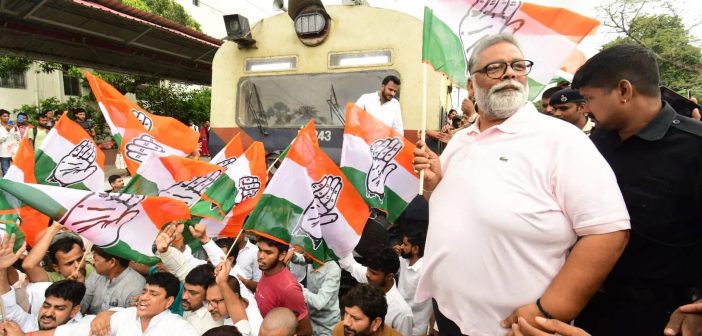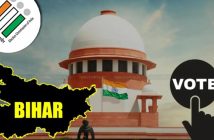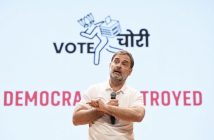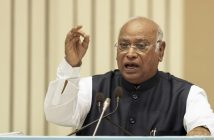The Bihar Bandh against voter removal shook the state on July 9, 2025, as opposition parties protested the Election Commission’s revision of the voter list. CPI(M) leader Hannan Mollah alleged a conspiracy to strip over two crore voters of their rights. Protesters blocked roads and railways, accusing authorities of targeting migrants and marginalized groups. The bandh sparked heated debates, with political parties clashing over the 2025 Bihar assembly election. Will this controversy reshape Bihar’s political future? Read on for the whole story.
On July 9, 2025, Bihar came to a standstill as opposition parties, led by the INDIA bloc, called for a bandh to protest the Election Commission’s Special Intensive Revision (SIR) of voter lists. The Bihar Bandh against voter removal was fueled by claims of a deliberate plot to disenfranchise over two crore voters, particularly migrants, Dalits, and people with low incomes. CPI(M) leader Hannan Mollah spearheaded the allegations, accusing authorities of manipulating voter rolls ahead of the 2025 Bihar assembly polls. Protests erupted across Bihar, with roads and railways blocked, highlighting deep political tensions. This article examines the causes of the bandh, the public response, and its implications for Bihar’s electoral landscape.
Why the Bihar Bandh Was Called
The Bihar Bandh against voter removal was organized by the INDIA bloc, a coalition of opposition parties including the Rashtriya Janata Dal (RJD), Congress, CPI(M), and CPI(ML) Liberation. It took place on July 9, 2025, to protest the Election Commission’s decision to revise electoral rolls through the SIR. Opposition leaders claimed this revision threatened to remove over two crore voters, particularly from marginalized communities, before the Bihar assembly election 2025. The bandh aimed to pressure authorities to halt the process, which they called a “votebandi” conspiracy, drawing parallels to the 2016 demonetization chaos.
Hannan Mollah’s Allegations of Conspiracy
CPI(M) leader Hannan Mollah was vocal during the bandh, alleging a deliberate plot to suppress votes. “The Election Commission is conspiring to de-franchise over two crore voters,” Mollah said in Patna. “This is a calculated move to block the poor, Dalits, and migrants from voting.” He claimed that the SIR’s strict documentation requirements, such as requiring multiple forms of identification, unfairly targeted vulnerable groups. Mollah also linked the bandh to broader protests, stating, “Along with the all-India Bandh, this is against the conspiracy to steal votes.” His remarks fueled the Bihar voter removal conspiracy narrative.
Details of the Voter Removal Allegations
The opposition alleged that the SIR, launched ahead of the 2025 Bihar assembly polls, was designed to exclude eligible voters. They accused the Election Commission and the ruling National Democratic Alliance (NDA), led by the BJP and JD(U), of orchestrating the plan. The SIR required voters to submit forms with documents like Aadhaar or passports, which many migrants and poor voters lack. Critics claimed that this could lead to the removal of 2 crore names, potentially impacting the 2025 Bihar assembly election. Rahul Gandhi compared it to alleged vote manipulation in Maharashtra’s recent polls.
Public Participation and Protests
The Bihar Bandh against voter removal saw widespread public participation. Protesters, including workers from the RJD, Congress, and CPI(M), blocked major highways and railway tracks across Bihar. In Patna, Arwal, Jehanabad, and Darbhanga, they burnt tyres and halted traffic on NH-30 and other roads. Trains, such as the Shramjeevi Express, were stopped, causing disruptions. Independent MP Pappu Yadav joined supporters at Sachiwalay Halt railway station, intensifying the protests. Shops and businesses shut down in many areas as the bandh gained traction, reflecting public anger over the Bihar voter removal conspiracy.
Political Reactions to the Bandh
The bandh sparked sharp reactions from political parties. Rahul Gandhi, leading a march in Patna, said, “The Election Commission is snatching voting rights from migrants and Dalits.” RJD leader Tejashwi Yadav called the SIR a “conspiracy to block votes” and criticized its timing, just months before the Bihar assembly polls 2025. The Election Commission defended the SIR, citing Article 326 of the Constitution, which mandates the maintenance of clean voter lists. The BJP dismissed the allegations, with a spokesperson saying, “The opposition is creating chaos to disrupt a routine process.” JD(U) leaders echoed this, calling the bandh politically motivated.
Official Clarifications and Updates
The Election Commission clarified that the SIR was a standard procedure to ensure the fairness of elections. It stated that 6.86 crore voters (87% of Bihar’s 7.9 crore) had received enumeration forms. The draft electoral roll was scheduled for release on August 1, with the final list to be published by September 30. The Bihar Chief Electoral Officer urged voters to submit forms even without documents, addressing concerns. Meanwhile, the Supreme Court was scheduled to hear a petition by the INDIA bloc against the SIR on July 10, 2025, signalling ongoing legal battles.
Impact on Bihar’s Political Climate
The Bihar Bandh against voter removal has deepened political divisions ahead of the 2025 Bihar assembly election. The opposition’s narrative of a Bihar voter removal conspiracy has resonated with marginalized communities, potentially boosting their voter turnout. However, it risks escalating tensions if the SIR proceeds without addressing concerns. The bandh’s success in mobilizing protests shows the INDIA bloc’s strength, but the NDA’s dismissal of allegations could polarize voters further. The controversy may also pressure the Election Commission to revise its approach, impacting trust in the electoral process.
Broader Implications for 2025 Polls
The bandh could reshape the 2025 Bihar assembly polls. If the opposition’s claims gain traction, they may galvanize anti-NDA sentiment, especially among Dalits and migrants. The Supreme Court’s ruling on the SIR could set a precedent for voter list revisions nationwide. However, the BJP and JD(U) may counter by highlighting development achievements to sway voters. The bandh’s fallout could also influence campaign strategies, with parties focusing on voter rights and governance issues. The ongoing debate over the alleged conspiracy to remove Bihar voters will likely dominate election narratives.
Challenges for Marginalized Voters
The SIR’s documentation requirements have raised concerns about excluding marginalized groups. Migrant workers, who form 20% of Bihar’s population, often lack local address proof. Dalits and Mahadalits face similar challenges, as many rely solely on voter IDs. The opposition warned that losing voting rights could also affect access to welfare benefits, such as pensions and rations. This fear has fueled the Bihar Bandh voter list protest, with leaders like Tejashwi Yadav vowing to protect low-income individuals. The issue remains a flashpoint in Bihar’s political discourse.
The Role of the INDIA Bloc
The INDIA bloc’s unity during the bandh showcased its growing influence. Leaders like Rahul Gandhi, Tejashwi Yadav, and Dipankar Bhattacharya marched together, signaling a coordinated strategy. Their focus on the Bihar voter removal conspiracy aims to challenge the NDA’s dominance. By framing the SIR as “votebandi,” they’ve tapped into public fears of disenfranchisement. The bloc’s planned protests beyond July 9 indicate a sustained campaign, which could shift voter sentiment in the 2025 Bihar assembly election.
Election Commission’s Defense
The Election Commission has maintained that the SIR is legally mandated to remove ineligible voters, including non-citizens. It emphasized that voters can raise objections to the draft list, ensuring transparency. The commission also launched awareness campaigns to encourage form submissions. However, the timing of the SIR, close to the Bihar assembly polls 2025, has fueled skepticism. Critics argue that the process lacks clarity, risking errors that could exclude genuine voters. The commission’s response will be crucial in addressing the Bihar Bandh voter list protest.
Public Sentiment and Future Protests
Public sentiment during the bandh was marked by anger and distrust. Many protesters felt the SIR was a deliberate attempt to weaken opposition strongholds. Social media posts on X reflected this, with users calling the revision a “conspiracy against democracy.” The INDIA bloc’s planned protests and the Supreme Court hearing suggest more unrest if concerns persist. The Bihar Bandh voter list protest has set the stage for a contentious pre-election period, with voter rights at the forefront.
Conclusion
The Bihar Bandh on July 9, 2025, against voter removal highlighted deep concerns over the Election Commission’s voter list revision. Led by the INDIA bloc, the protests accused authorities of a conspiracy to disenfranchise two crore voters, sparking widespread debate. While the opposition gained traction, the NDA and Election Commission defended the process as routine. With the Bihar assembly election 2025 approaching, this controversy could shape voter trust and political strategies. The Supreme Court’s upcoming ruling may determine the fate of the issue, influencing Bihar’s electoral future.
Stay updated on the Bihar assembly polls 2025 and share your views on voter rights.




